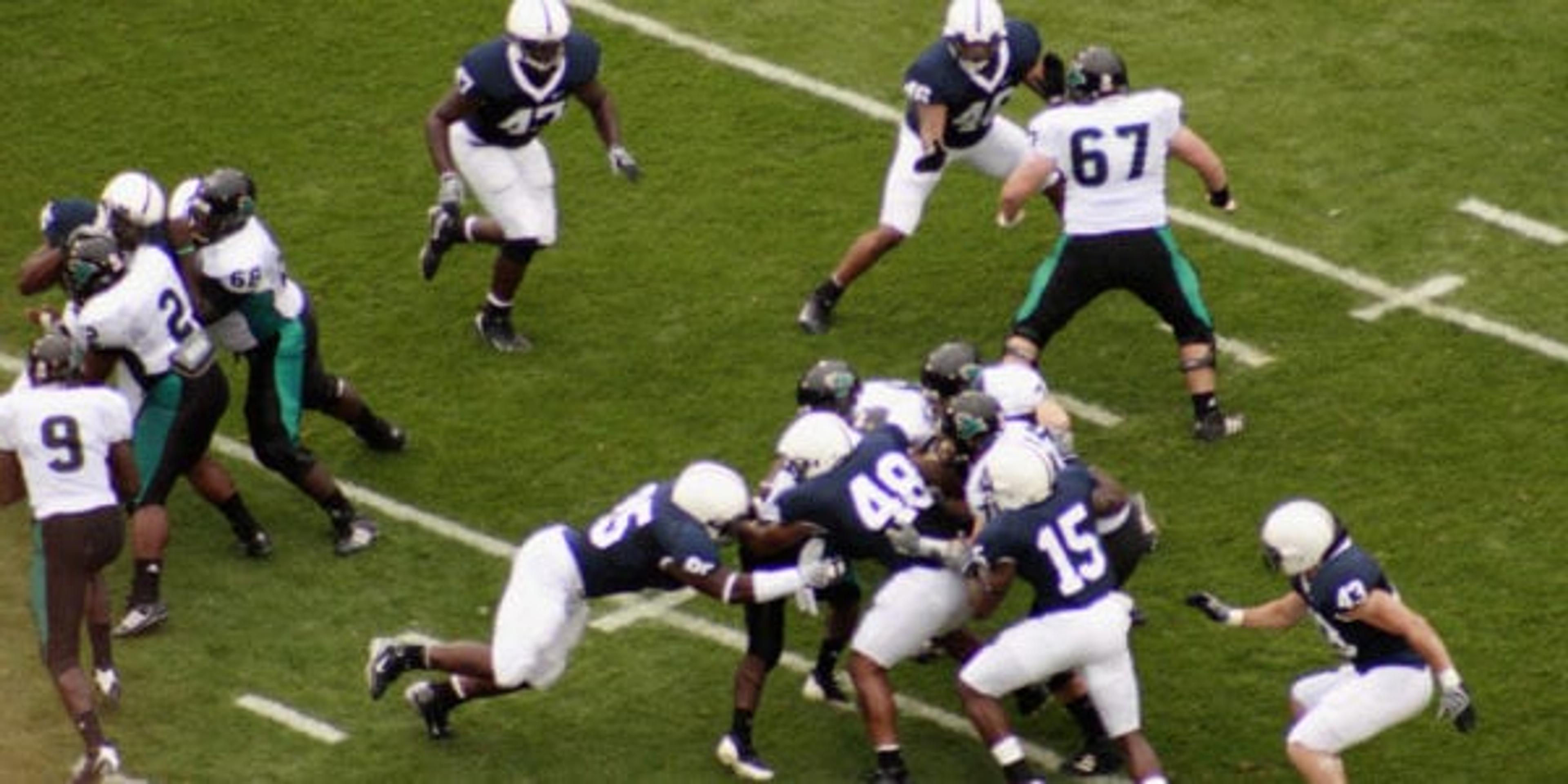Heads Up: How to Minimize Your Child’s Risk of a Sports-Related Concussion
Guest Blogger
| 4 min read

For many families with middle and high school students, back to school means back to sports. While athletics are a great way to keep kids active and healthy, participation in certain competitive sports can pose health concerns, including the possibility of suffering a concussion. A concussion is a type of traumatic brain injury (TBI) that changes the way the brain normally works. It is usually caused by a bump, blow or jolt to the head or body that results in the brain rapidly moving back and forth within the skull.
Many concussions are temporary and do not result in loss of consciousness, which is perhaps why most people may not realize they have a TBI or recognize its symptoms. These injuries often result in headaches, difficulties with tasks where concentration is required, memory, balance and/ or coordination. Traumatic Brain Injuries are not uncommon especially with contact and collision-prone sports such as football, soccer, gymnastics and cheerleading.
How to Recognize Symptoms of a TBI
If your child experiences any of the following symptoms after a tough tackle, bump, blow or jolt to the head or body, he or she should be evaluated by a medical professional immediately – loss of consciousness, confusion or disorientation, a headache accompanied by nausea or vomiting, or evidence of deteriorating mental status. However, not every head injury requires a trip to the hospital. Less severe symptoms can be assessed and discussed with your primary care physician. Still, it is important to follow all medical recommendations pertaining to a TBI.
The Centers for Disease Control and Prevention estimates that 1.6 to 3.8 million sports- and recreation-related concussions occur in the United States each year.
Check out these tips to minimize and manage your child’s risk:
- Choose Wisely: Football accounts for more than 60 percent of TBIs, according to the Brain Injury Research Institute. As your child considers which sport he or she may choose to play, make sure you are aware of the health risks associated with participation and take the necessary steps to keep them safe.
- Utilize Equipment: It’s important that your child wears the appropriate safety equipment during every practice and competition. A properly fitted helmet or other protective gear can reduce the risk of TBIs. The American Society of Neurological Surgeons recommends purchasing equipment that’s been given a sticker of approval from the American Society for Testing and Materials to provide maximum protection. Also, keep in mind the importance of a thick, properly fitted mouth guard. While the most obvious benefit of wearing a mouth guard is for the protection of the jaw and teeth, it may also diminish the level of shock that reaches the brain in the event of a head injury.
- Lead by Example: Always remember that your kids are looking to you as an example of behavior to mirror in all areas of life. Be sure to consistently model safe sports habits and behavior as well as demonstrating good sportsmanship in both your words and actions. The Brain Injury Associate of America asks parents and coaches to encourage safe play to prevent unnecessary collisions that may result in TBIs. It is also important to emphasize the importance of health and well-being, more than performance or winning.
- Getting a Baseline Evaluation: Baseline testing is a pre-season exam administered by a trained health care professional. This assessment measures reaction time, balance, memory and concentration capacity, problem-solving ability and speed of mental processing. It also records extensive information about the individual’s history of concussions and related symptoms. If your child has a suspected TBI and a baseline test on record, he or she will be asked to retake the exam. The results from before and after the injury can then be used in comparison to help your doctor determine whether or not your child has suffered a concussion.
- Rest and Recover, Return to Play: According to the CDC’s “Heads Up Brain Injury” recommendations, the process to return to play is best conducted through a team-based approach with a health professional trained in TBI care who knows the athlete’s physical abilities and endurance. After the recommended period of rest and recovery has been reached, the child can move to the next stage in the process. It is important to gauge the athlete’s performance as it relates to each individual step. A health care professional will be able to determine the child’s progression timeline:
- Step 1: Light aerobic activity
- Step 2: Moderate activity
- Step 3: Heavy, non-contact activity
- Step 4: Practice & full contact
- Step 5: Competition
In some cases, the athlete may be able to work through one step in a single day, while in other cases it may take several days to work through an individual step. The entire five-step process could take several weeks or months to complete.
Dr. T. Jann Caison-Sorey is a pediatrician, adolescent medicine physician and senior medical director at Blue Cross Blue Shield of Michigan.
Photo Credit: Caitlin Regan via Flickr
If you enjoyed this post, you may also be interested in reading:





